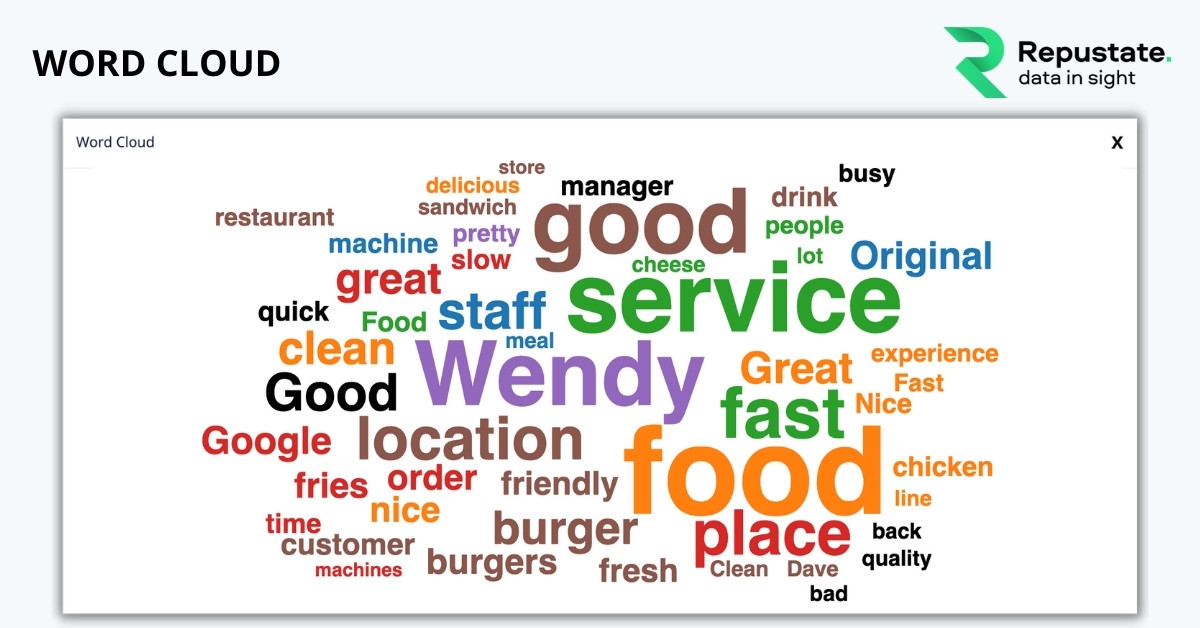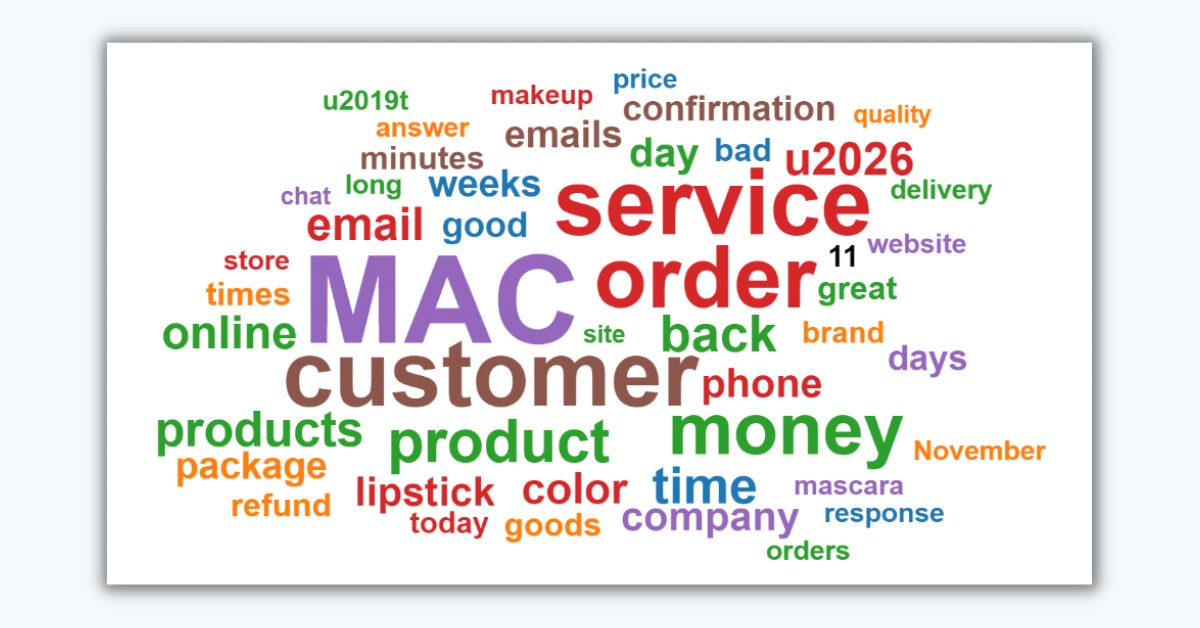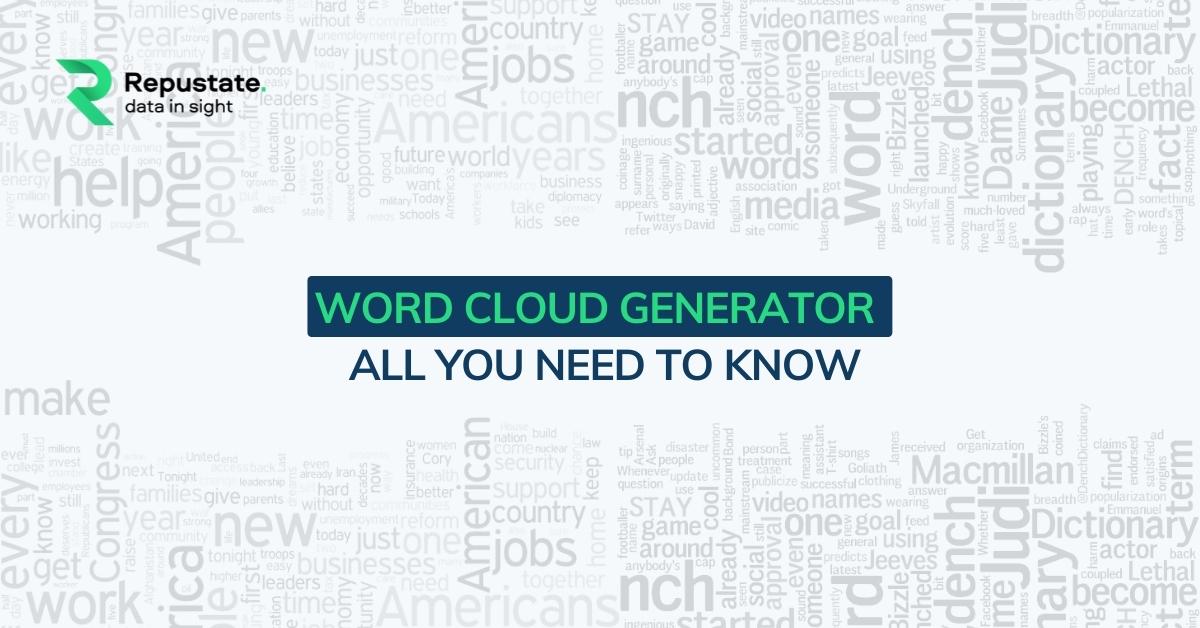Word Cloud Generator - All You Need To Know
Word clouds are simple visual aids that make it easy for the mind to grasp the most important elements of any voice-of-the-customer analysis. They make presentations audience-friendly and allow for great discussions. This article gives you all the information you need on word clouds and word cloud generators, as well as the best ways in which you can use them. You will also find some cool free word cloud generation tools. Read on to know more.
What Is A Word Cloud?
A word cloud is a cluster of keywords in different sizes that represents the metadata in the block of text that is analyzed. The size represents the frequency, and therefore, the importance of that particular word in the data. This means, the bigger and bolder the words, the more important they are to the word clouds. In this manner, word clouds give you a holistic view of the important aspects occurring in your data.

As an example, let us look at the word cloud above, which has been derived from a review sentiment analysis of customer feedback data about Wendy’s.
We can see the most commonly occurring keywords in the order of their significance based on their size and how bold their formatting is. In this example, aspects emerging from the data in descending order of their significance are Wendy, food, good, service, location, original, burger, Google, etc.
How Do You Create A Word Cloud Using Repustate?
To create a word cloud through Repustate you need to analyze the data through the sentiment analysis platform, Repustate IQ. The solution allows you to analyze any kind of data - text, audio, or videos - such as for TikTok insights or survey data analysis, and then gives you insights on its visualization dashboard.
These are the steps in which the platform generates the word cloud on the backend.
Step 1: Fetching the data
We use the aspect model that is best suited for your industry. This gives you the most accurate insights from the data you are analyzing. You can upload the data such as Instagram social listening data, comments on product review websites, podcasts, surveys, etc. directly, by downloading the data in a .csv file and feeding it to the tool. Alternatively, you could input the source URL and fetch the data directly.

For the purposes of this example, we fetched the data for MAC Cosmetics reviews on Amazon and TrustPilot.
Step 2: Data processing
Data processing happens in the following ways if there is a video/audio feed.
- Audio transcription - All audio files from podcasts, radio, or videos are transcribed and added to the text analysis pipeline
- Captions - If there are captions in the video, they are captured and the text is extracted from them and added to the data
If the data is from a text-based source such as survey data, video comments, reviews, news sources, etc, Repustate’s sentiment analysis solution extracts all that including emoticons, short forms, hashtags, and such as well.
Eventually, the data from all the streams are collated and readied for text analysis and emotion mining through the sentiment analysis process.
Step 3: Text Analysis For Word Cloud Generation
Several ML tasks such as natural language processing, semantic clustering, sentiment analysis, and others, process the data to analyze it for word clouds and deeper insights.
- Natural Language Processing (NLP) analyzes the data for grammar, sentence structure, etc. to understand the data just as a human does. It then identifies and extracts topics through topic clustering, as well as discovers aspects, and themes, which will be sent for sentiment analysis. NLP also enables the tool to extract non-text data such as emojis, hashtags, and such during social media sentiment analysis so that you get accurate, contextual insights.
- Named Entity Recognition (NER) - NER identifies and extracts “named” entities such as people’s names, locations, objects, currencies, etc, so that they can be analyzed for representation on the word cloud.
- Semantic Clustering - The data is processed for semantic analysis so that similar words are clustered, thus eliminating redundant data.
- Multilingual Data Analysis - Languages are identified and analyzed using speech taggers native to the language of the data so that you get insights from the original language. This is important because a language is more than just words and nuances can be neglected in machine translations.
- Tagging - Text tagging is an important ML task. Custom tags are created so that the tool can recognize similar words and eventually tag them according to aspects, topics, and themes.
- Sentiment Analysis - The data is analyzed for emotion detection and aspects and themes are scored between -1 and +1. These are eventually aggregated and you get an overall sentiment score of the data. Green denotes positive sentiment, red means negative, and blue shows a neutral sentiment. (See figure below).

Step 4: Visualizing Word Clouds
Now that all the data has been analyzed for the recurring themes, aspects, and emotions, the word cloud is ready to be generated on the customer insights dashboard. Aspects that are mentioned the most are presented in the boldest and biggest lettering, gradually descending in font and formatting based on their significance. (See figure below)

A look at the quantitative data (see figure below) shows the same insights with the exact number of times these aspects have appeared in the reviews on both sources. However, as you can see, having a visual representation of the same data makes it easier to understand the insights.

Thus, in this manner, word clouds give you a clear, bird’s eye view of what the data is all about. It is the perfect starting point to dig further into what this discovery reflects in order to get actionable marketing, product, and brand insights.
What Are The Applications Of A Word Cloud?
Word clouds can be a great way to get an aggregated view of what the data is pointing to. This is great for surveys, news stories, and product and service reviews. Word clouds essentially can be applied for the following reasons:
- Word Clouds are direct and easy visual representations of data analysis insights
- Provide a quick summary for an overall understanding of the subject
- Allow researchers and audiences to understand peers’ inputs
- Great for audience participation and team discussions
- Foster further analysis for a more in-depth understanding of the data
Limitations Of Word Clouds
Even though word clouds are easy to understand and great for discussions, they have certain limitations because of which you cannot use them in isolation for business decisions. These drawbacks are such as -
- Word Clouds do not give any granular information about the aspects
- They capture semantic information and thus give redundant information
- They cannot capture audience sentiment or complex themes
- Word clouds do not have analytical accuracy
Are There Any Free Word Cloud Generators?
If you’re thinking about using a word cloud for a presentation or a quick office discussion you don’t need to purchase a text analytics tool just for that. There are several free word cloud generators that can be of use for such purposes.
This one is a user-friendly, free tool for creating word clouds. You can simply copy-paste the text you want to generate the word cloud for or copy the URL of the webpage. You can also upload data you have in a downloaded file if you need. You can choose the number of words you want to show and group similar words as well.
This is a great tool if you want to add some panache to your presentation. Word clouds can be generated in shapes you can choose from, as well as different background colors, or even directions in which you want the words to appear.
Yes, you read that right. ABCYA may be a constant on your child’s tablet or computer screen, but it has a great tool to generate word clouds too. You can type the words you want or copy the entire text and viola! You have the word cloud you need.
Conclusion
Word Clouds are apt for small businesses and agencies for client meetings that need that additional chutzpah. They break the monotony of data-heavy charts and slides and offer an eye-catching way of showcasing important information. But as mentioned, they are not the best when it comes to making insightful discoveries from hidden information in critical customer feedback or brand-driven news stories.
To get granular, valuable information as you analyze customer experience, you need an intelligent, ML-based text analytics tool that is quick and reliable. It can give you essential insights such as customer sentiments, market trends, topic-based sentiment scores, and so much more. All this, apart from the fact that it also has a word cloud generator.
 Home
Home
 Dec 2, 2022
Dec 2, 2022

 Jeremy Wemple
Jeremy Wemple
 Dr. Ayman Abdelazem
Dr. Ayman Abdelazem
 Dr. Salah Alnajem, PhD
Dr. Salah Alnajem, PhD
 David Allen
David Allen

 Repustate Team
Repustate Team

